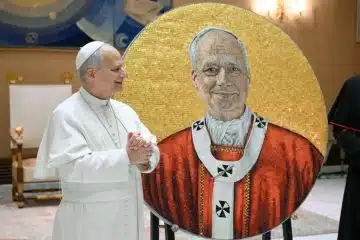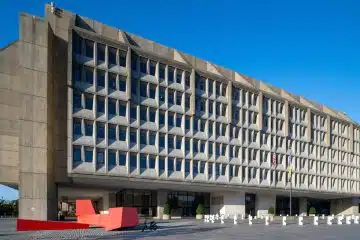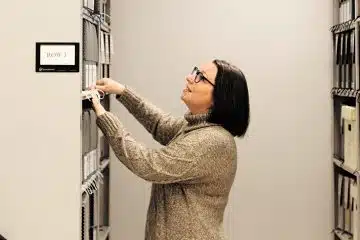Columbus diocese announces strategic planning initiative
Columbus, Ohio, Mar 1, 2021 / 08:01 pm MT (CNA).- The Diocese of Columbus announced Monday a strategic planning initiative meant to discern the future of the local Church, encouraging evangelization and missionary discipleship.
“This really is our plan – all of us together,” Bishop Robert Brennan of Columbus said March 1. “Our goal is to identify the needs of our Diocese for the 21st Century and how we meet those needs, and to expand Catholic presence to all our people, which is going to take some creativity. That’s at the heart of it. We want to make the presence of the Lord, the experience of the Sacraments, the encounter with Christ – we want to make that more available to people.”
The initiative, “Real Presence, Real Future”, was announced to parishes and schools in the diocese Feb. 27-28, and to priests Dec. 1, 2020.
The diocese said that “this initiative aims to reimagine how the Church serves her people through a process of listening to their needs, ideas, concerns, and desires. This planning and consultation phase will be held throughout 2021 and the findings will be implemented over the next few years. The full scope of the ‘Real Presence, Real Future’ initiative will prepare the Diocese to increase its Catholic presence over the next 10 to 20 years.”
It added that the initiative “is intended to meet the many needs of the Diocese of Columbus’ diverse areas and ethnicities, while emphasizing the utilization of active diocesan priests and deacons, mission-oriented parishes and schools, and all other available resources.”
“Real Presence, Real Future” will focus on engaging Catholics to reflect on and share Christ’s presence in their lives; planning the Catholic presence in each of the diocese’s 23 counties “by integrating missionary outreach, parish and school footprints, and leadership requirements for the next five years”; and developing resources “to support priests, deacons, and lay leaders in parishes and schools.”
Six “evangelization subcommittees” were formed months ago, with foci on forming missionary disciples; increasing outreach at universities; social media; deploying lay missionaries in parishes and schools; formation of faculty and staff in Catholic schools; and outreach to the irreligious.
Father Adam Streitenberger, Bishop’s Coordinator for Evangelization, said that “Each of the evangelization subcommittees will develop a plan to address the needs and initiatives for evangelization and missionary discipleship formation identified by Bishop Brennan.”
He emphasized the importance of evangelization, and said that “all of the baptized must respond to the call and be formed as missionary disciples, and to be equipped to bring Christ to their families and communities.”
The Columbus diocese was erected in 1868, and Bishop Brennan said, according to The Catholic Times, “We live in a diocese that was founded on an 1868 model, built for the needs of 1868. We have to be able to use and harness some of the new resources … in a way that helps us to meet the needs to proclaim the Gospel.”
“We’re looking at diocesan offices, what are the structures that we need and what works, what needs to change, not because of any judgment on people but what structures do we need in this new millennium, how do we best serve the needs of the parishes in the proclamation of the faith,” he added.
Bishop Brennan said: “The same is true in terms of how do we deploy priest personnel. We try to do the best that we can to meet needs as they arise. But we know that we will have fewer priests just by the numbers and by the numbers of men in formation. I’m hoping to see all that grow, but we can make some realistic predictions.”
Between 1999 and 2016, the number of parishes in the diocese fell by one, from 107 to 106. In the same time, the total number of priests serving in the diocese, both secular and religious, dropped from 234 to 201.
“How do we structure ourselves so that we can have strong, vibrant communities and worship together and make Masses available for people at times that are convenient by working together rather than everybody duplicating what the parish next door is doing. So it’s going to take a little bit of creativity on all of our parts,” the bishop commented.
The initiative is being facilitated by the Catholic Leadership Institute, a nonprofit strategic planning group. The group has launched a Disciple Maker Index Survey for parishioners which will be available through March 22.













